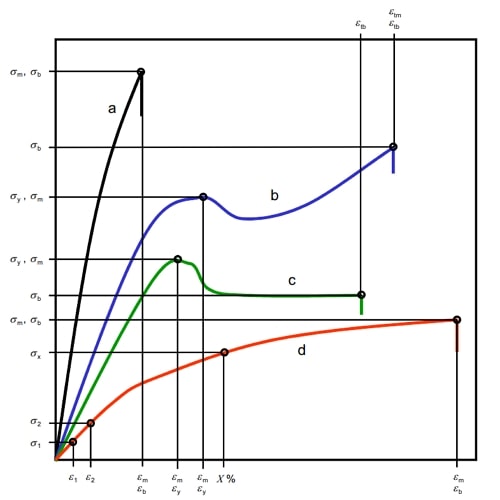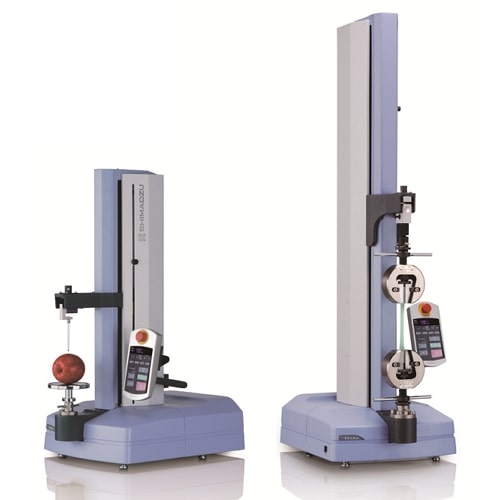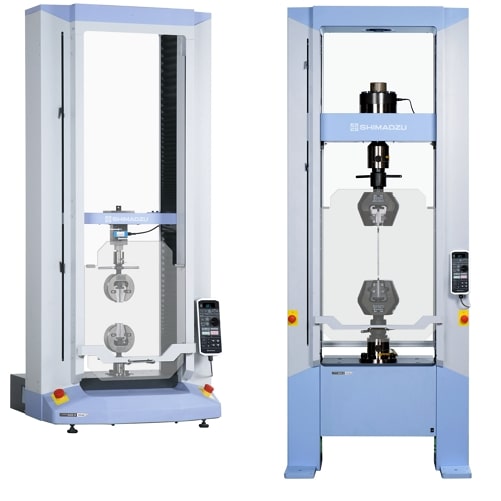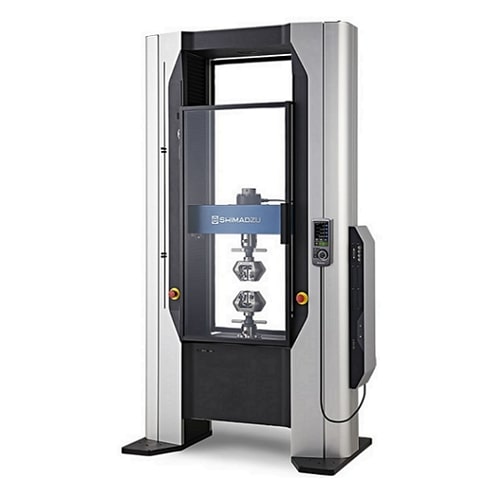
Company: TeMeCo
Tensile test according to ISO 527
The methods of the standard
The general principles are described in the test standard ISO 527-1, while the tests are described in parts 2 to 5.
- Part 1: General principles
- Part 2: Test conditions for moulding and extrusion compounds
- Part 3: Test conditions for films and sheets
- Part 4: Test conditions for isotropic and anisotropic fibre-reinforced plastic composites
- Part 5: Test conditions for unidirectional fibre-reinforced plastic composites
>>> Link to Wikipedia ISO 527 (German)
The corresponding US standard is ASTM D638.
ISO527 describes the determination of the characteristic values E (modulus of elasticity), Rp (yield stress), Rm (tensile strength), A (elongation at break), μ (Poisson’s ratio) using a tensile test.
Two methods are described:
- Method A (without extensometer)
- Method B (with extensometer)
Testing machines
EZ-X

Universal testing machines EZ-X
Shimadzu EZ-X are single column universal test machines with 500N or 5kN loading capacity going together with Trapezium-X software and after-sales support from TeMeCo.
AGS-X

Universal Testing Machines AGS-X
AGS-X are two-column universal testing machines from Shimadzu with a focus on the essentials at a moderate cost. Now even more valuable thanks to the new TrapeziumX-V software and TeMeCo’s renowned after-sales support.
AGX-V

Universal testing machines AGX-V
AGX-V are high-end, two-column universal testing machines from Shimadzu with an extremely rigid frame, flexible electronics, intuitive software and TeMeCo’s renowned after-sales support.
Would you like advice, a quote or do you have a question about our services and products?
Do not hesitate to contact us.
We will be happy to assist you!



